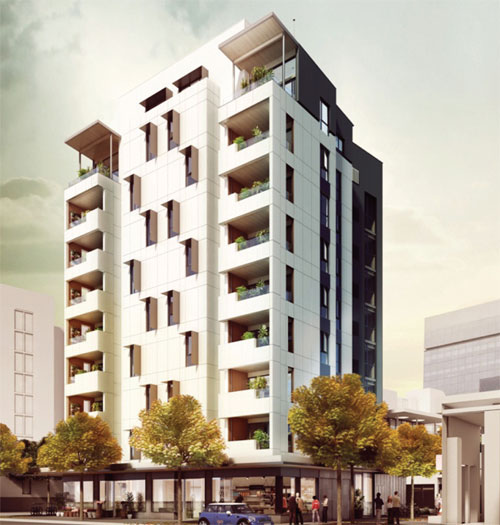Tall Wood Takes a Stand
What Is Mass Timber Construction?
Mass timber construction uses large prefabricated wood members such as CLT, LVL, and LSL for wall, floor, and roof construction. Glulam can also be used in beam and column applications. Engineered for strength, these wood products offer a creative way to use smaller wood elements from sustainably managed forests while resulting in members that are strong and reliable, with almost no shrinkage.
Since CLT panels resist high racking and compressive forces, they are particularly cost effective for multi-story and long-span diaphragm applications. Some specifiers view CLT as both a product and a system that can be used interchangeably with other wood products; it can also be used in hybrid applications.
There are a number of different types of design approaches to mass timber construction for tall wood buildings. Builders can use a conventional platform-based CLT system, as was used for the 10-story Forté apartment building in Australia. The two other design examples include the LifeCycle Tower and FFTT systems. The LifeCycle Tower approach developed by Cree GmbH features hybrid panels composed primarily of glulam and concrete. In some cases, steel connectors may be used to provide ductility in the structure when needed to address wind and earthquake forces. The FFTT system, outlined in Green's Tall Wood report, uses a solid wood or concrete central elevator/stair core and CLT floor slabs in a balloon-frame system.
 |
At 10 stories tall, Forté in Melbourne, Australia, was the tallest timber apartment in the world when it was completed in 2012. Rendering courtesy of Lend Lease |
| WOOD IS... |
» Strong, lightweight, and versatile » Sustainable, natural, recyclable, and renewable » Carbon efficient, since it sequesters carbon and reduces greenhouse gases in the atmosphere » Cost effective and abundant—easy to source locally » Reliable, providing proven performance for seismic, wind, and other loading conditions » Energy efficient, with lower thermal conductivity » Warm, visually appealing, and inviting |
LifeCycle Tower (LCT) is a unique wood-hybrid construction system developed by Cree GmbH, an Austrian-based general contracting, product development, and technology firm. This timber-based construction system relies on a central stiffening core for the elevator, stairs and shafts. A prefabricated hybrid wood/concrete slab system is supported by that core on the interior and by glulam posts on the exterior. The initial research concluded that this system can be used to build sustainable structures up to 30 stories.
LCT system components can be produced by many different enterprises, providing excellent opportunities for regional craftsmen and the timber industry. Floor panel slabs are prefabricated using a proprietary design featuring a layer of reinforced concrete bonded to glulam beams. This process creates a decking panel that performs well both thermally and acoustically; the concrete also provides an added layer of fire protection. Lighting, HVAC, sprinklers, and mechanical systems are then housed in the voids between the structural glulam beams within the slab. Glulam columns support the floor slabs on the exterior. A wood-frame curtain wall, including windows, insulation, and sheathing, is also attached to the glulam columns in the shop. A series of metal plates, tubes, and pins is preinstalled in all the elements to speed up the on-site assembly process and connect all the elements.
Cree GmbH demonstrated their LifeCycle Tower methodology with LCT ONE, a demonstration project built in Austria that now serves as the firm's headquarters. While the concrete foundation and core was being built on site, the wall and floor panels were produced off-site. In March 2012, the speedy construction took place; eight stories were erected in just eight days.









